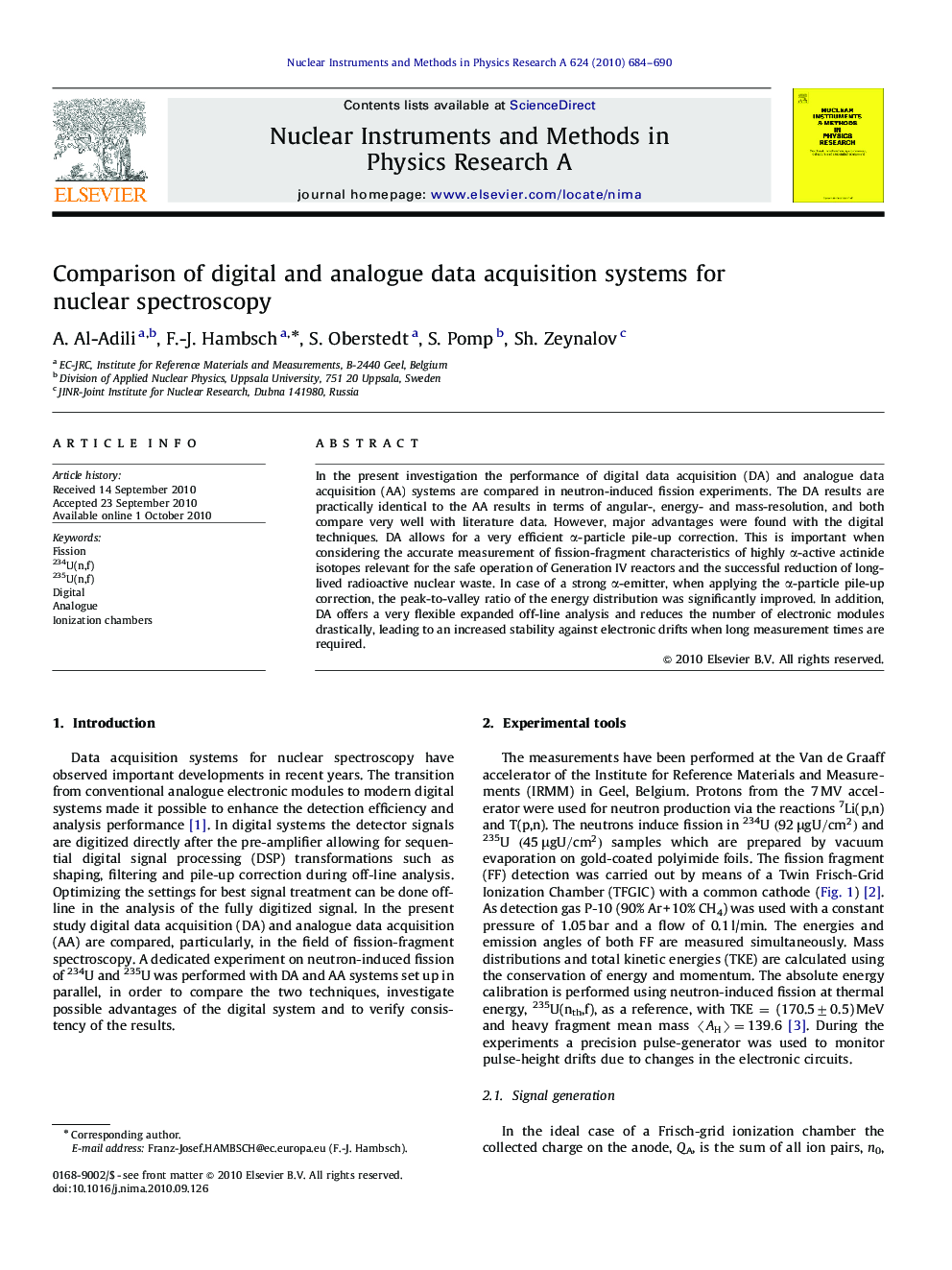| Article ID | Journal | Published Year | Pages | File Type |
|---|---|---|---|---|
| 1826328 | Nuclear Instruments and Methods in Physics Research Section A: Accelerators, Spectrometers, Detectors and Associated Equipment | 2010 | 7 Pages |
In the present investigation the performance of digital data acquisition (DA) and analogue data acquisition (AA) systems are compared in neutron-induced fission experiments. The DA results are practically identical to the AA results in terms of angular-, energy- and mass-resolution, and both compare very well with literature data. However, major advantages were found with the digital techniques. DA allows for a very efficient α‐particleα‐particle pile-up correction. This is important when considering the accurate measurement of fission-fragment characteristics of highly α‐activeα‐active actinide isotopes relevant for the safe operation of Generation IV reactors and the successful reduction of long-lived radioactive nuclear waste. In case of a strong α‐emitterα‐emitter, when applying the α‐particleα‐particle pile-up correction, the peak-to-valley ratio of the energy distribution was significantly improved. In addition, DA offers a very flexible expanded off-line analysis and reduces the number of electronic modules drastically, leading to an increased stability against electronic drifts when long measurement times are required.
